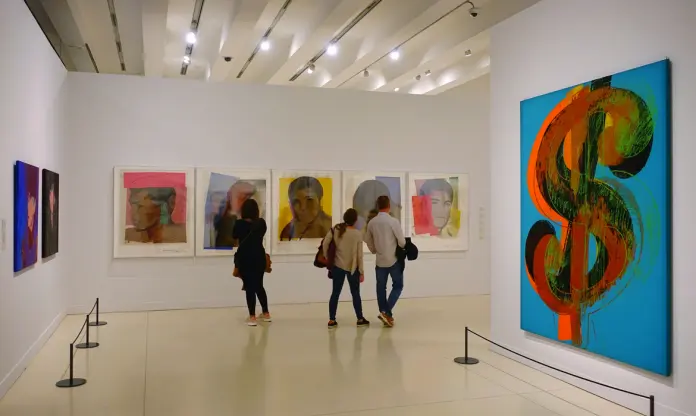In its recent judgment of March 26, the United States Court of Appeals for the Second Circuit (the “court of appeals”) rules on the scope of fair use.Specifically, the court of appeals determines if a series of silkscreen prints and illustrations of a famous musician based on a photograph taken by a well-known photographer qualifies as fair use.
We refer to Andy Warhol’s Prince Series, comprising 14 silkscreen prints and two pencil illustrations of Prince based on the photograph taken by Lynn Goldsmith in 1981 (the “photograph”). Goldsmith is famous for her photographs of rock stars and has extensive experience in the field. In 1984, she licensed the photograph to Vanity Fair magazine for use as an artist reference in the November issue. The magazine commissioned Andy Warhol to create an illustration based on the photograph. However, he went beyond the commission and created the series of prints and illustrations comprising the Prince Series.
Goldsmith first became aware of the Prince Series in 2016, when Prince died and part of the Series was published as a tribute to the singer. Goldsmith then contacted the Andy Warhol Foundation (“AWF”), successor of the artist and copyright holder for the Prince Series, reporting the alleged violation of her copyright in the photograph. In response, the AWF sued Goldsmith seeking a declaratory judgment that the Prince Series did not infringe the copyright in the photograph or, alternatively, that it qualified as fair use. Goldsmith brought a counterclaim for infringement.
In the first instance judgment of July 8, 2019, the US District Court for the Southern District of New York (the “first instance court”) found that the Prince Series was fair use for various reasons, including that Warhol’s use was “transformative,” i.e., that the Prince Series depicted Prince as an iconic figure, whereas the photograph displayed Prince as a vulnerable, uncomfortable person and that, therefore, the Prince Series works were an artistic innovation.
The judgment discussed here upholds Goldsmith’s claim and considers that the Prince Series (i) does not qualify as fair use; and (ii) is substantially similar to the photograph. The court of appeals thus remands the case to the first instance court so it issues a new judgment in line with this criterion. See below a summary of the grounds for this conclusion.
On the absence of fair use
To examine the court of appeals’ analysis, we must first review the concept of fair use. In the US, this case law concept, subsequently codified in the 1976 Copyright Act (see Section 107 of Title 17 of the US Code), is a general exception to copyright. For the application of the fair use defense, judges must weigh various factors-the provision includes a non-exclusive list of four factors-to determine if the use of a protected work can fall outside right holders’ scope of control.
To examine the first factor (purpose and character of the use), we must determine if the Prince Series can be considered “transformative,” i.e., if it conveys a “new meaning or a new message” plainly different from the original work. The court of appeals (i) dismisses the court of first instance’s reasoning (that the Series was transformative because it changed the depiction of Prince from a vulnerable person to an iconic figure); and (ii) notes that judges should not become art critics, simply assessing if the use has a “substantially” new and different artistic purpose departing from the original work.
Therefore, the key is to determine (i) the meaning of “substantially different;” and (ii) how different the secondary work should be from the original work. According to the court of appeals, the original work must not be “barely recognizable” for the secondary work to be transformative, but the secondary work must comprise something more than the imposition of another artist’s style retaining the essential elements of the original.
The court of appeals concludes that the Prince Series is not a transformative use of Goldsmith’s photograph. The court considers that, although the Series’ aesthetics and appearance clearly reflect Warhol’s signature style, it retains the photograph’s essential elements without significantly transforming them, and thus the photograph is recognizable at all times.
The analysis of the second factor (nature of the copyright-protected work) also supports the court of appeals’ conclusion. The photograph being unpublished and creative supports Goldsmith’s claims, although the photograph had been licensed.
The third factor (the amount and substantiality of the portion used in relation to the original work as a whole) does not support the fair use defense in this case, either. The court of appeals considers that Goldsmith does not have a monopoly on Prince’s face, but she has a broad monopoly on the singer’s image as it appears on her photograph. The court concludes that the Prince Series borrows significant elements from the photograph, both quantitatively and qualitatively, thus making the photograph easily recognizable in the Series.
Regarding the fourth factor (the effect of the unauthorized use on the market for the copyright-protected work), the court of appeals agrees with the first instance court, stating that the “primary” markets of the photograph and the Prince Series do not overlap. However, according to the court of appeals, the Prince Series makes it hard for Goldsmith to license the photograph, e.g., to magazines (like Vanity Fair) for illustrating articles and other material, since both creations depict the same singer and have the same customer base.
On substantial similarity
The court of appeals does not only find that there is no fair use, but also concludes that the Prince Series and the photograph are substantially similar. The court reaches this conclusion considering that the photograph is easily recognizable or identifiable in the Prince Series, adding that Warhol did not copy the “idea” conveyed by the photograph, but the photograph itself.
Author: Marta Zaballos
